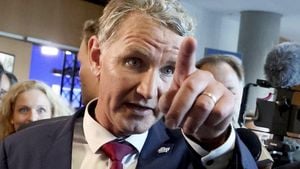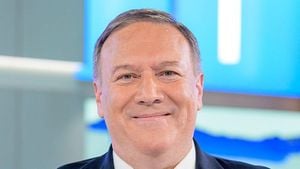The New York Mets have bolstered their roster by acquiring outfielder Alexander Canario from the Chicago Cubs for cash, aimed at providing extra depth as they deal with early spring training injuries. The trade, completed on February 25, 2025, arrives after Canario was designated for assignment by the Cubs the week prior. The move reflects the Mets’ immediate need for players who can step up as they navigate the absence of key athletes during spring training.
Canario, who turned 25 last May, is noted for his potential and raw power. Originally signed as an international free agent by the San Francisco Giants in July 2016, he had been part of the Chicago system since being acquired during the 2021 trade deadline deal involving superstar Kris Bryant. Over the course of his time with the Cubs, the promising outfielder struggled to secure consistent playing time, limited by injuries and the crowded Chicago outfield. Despite showcasing impressive numbers during the 2022 minor league season, hitting 37 home runs, his advancement was stunted after suffering major injuries during winter ball. He missed much of the 2023 season due to these setbacks.
His absence from the lineup was noticeable, leading to only limited appearances with the major league roster. Canario made his big league debut with the Cubs in September 2023 and recorded modest performance stats: he hit .286 with two homers and eight RBIs over 21 games. Although he consistently displayed flashes of brilliance, his opportunity to establish himself on the roster was affected by the Cubs’ decision to designate him for assignment following their signing of veteran infielder Justin Turner. This move was primarily made to prepare for the arrival of Turner, which seemingly sealed Canario’s fate with the Cubs.
The Mets’ acquisition of Canario presents both opportunities and challenges for the player. The team recently placed infielder Nick Madrigal on the 60-day injured list due to a fractured shoulder sustained during spring training, creating room for Canario. During his time competing for bench situational roles, Madrigal’s injury opens the door for Canario to fill this vacancy, though he might still face competition from other outfield options already on the roster.
Mets manager Carlos Mendoza indicated the severity of Madrigal’s injury, stating it would keep him out for “a long time.” This statement underlines the urgency for the Mets to secure reliable players who can contribute immediately. On the other hand, it raises questions about Canario’s role, as the Mets already have established outfielders including Juan Soto, Brandon Nimmo, and Starling Marte. This creates competition for playing time, challenging Canario's chances of breaking camp with the major league team.
The trade, particularly for cash rather than prospects, suggests the Mets have confidence in Canario’s abilities, even if they are unsure he will emerge immediately as an everyday player. Canario’s record shows potential appeal as a solid bench outfielder with power. Experts believe he could eventually find his niche, but it’s uncertain whether his hitting skills alone can overcome the obstacles faced during matchups against higher-level competition.
While Canario’s performance at Triple-A Iowa last year was decent, showcasing power with 18 home runs and maintaining a .243 average, his struggle with strikeouts doesn’t bode well for the transition to the major leagues. Reports show he had difficulty with contact, leading to elevated strikeout rates. His statistics raised concerns about his long-term viability as anything more than a potential Quad-A player, unable to excel at the major league level. This lack of options for the Cubs meant Canario was facing elimination from their roster.
The decision to trade him rather than risk losing him on waivers likely indicates the depth of Chicago’s outfield options. With the Cubs maintaining multiple established outfield players, adding Canario to the mix was no longer feasible, particularly as other young prospects showed promise.
Looking forward, the Mets will need to analyze Canario’s integration with their roster. If he can carve out a role, perhaps as part of their bench or occasionally as a substitute, it might not only revitalize his career but also strengthen the team’s depth. Given the uncertainties surrounding outfield health and performance, the Mets seem to be hoping Canario’s potential can be unleashed now more than ever.
This move reiterates the Mets’ strategy of seeking immediate solutions to address injury-riddled positions during the key early phases of their season. While they hope for the best, they must also remain mindful of the competition within their own ranks, as the battle for outfield roles continues to intensify.



